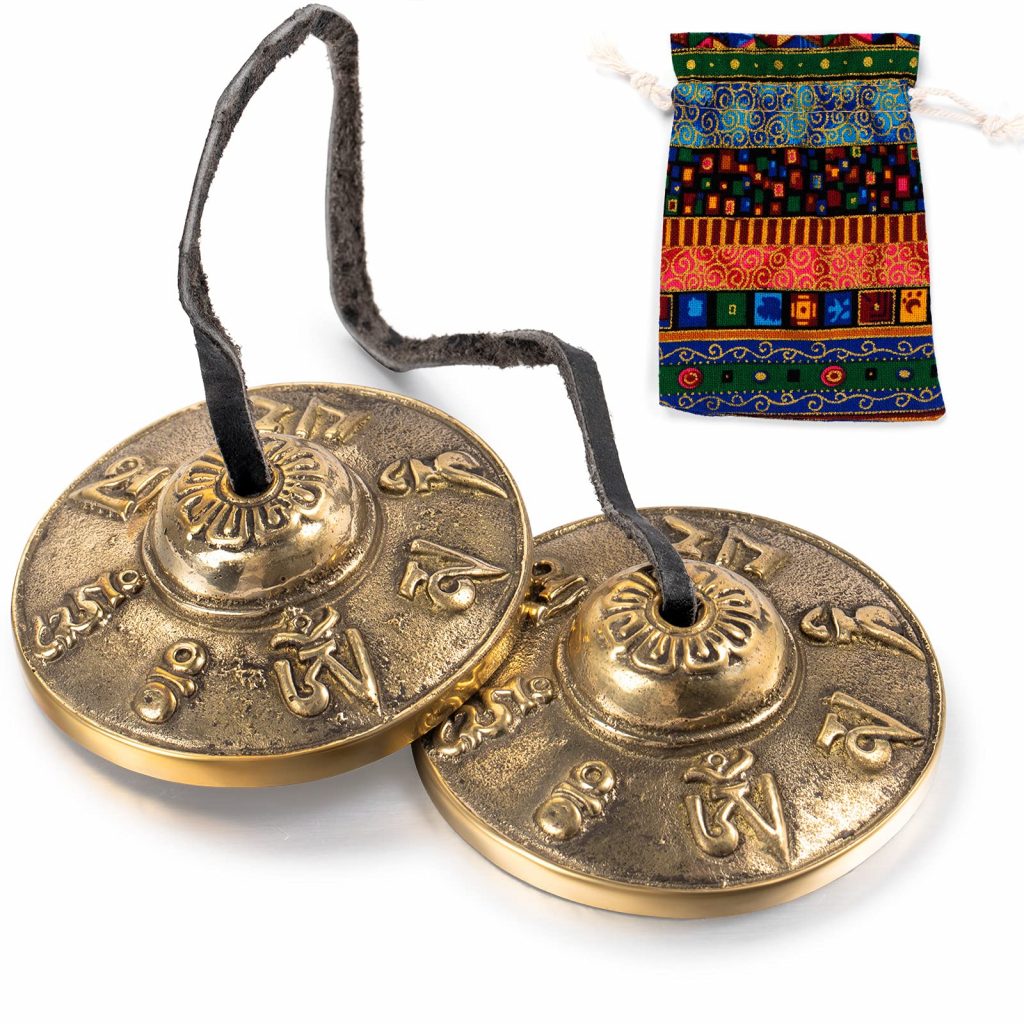Tingsha Bells, with their clear, shimmering tones, have a rich history deeply intertwined with spiritual practices and cultural traditions. These distinctive cymbals, also known as Ting-sha or Ting-shags, offer a fascinating journey through time, reflecting their sacred significance and the evolution of their use.

Ancient Origins: The roots of Tingsha Bells can be traced back to ancient Tibetan and Himalayan cultures. Crafted from metal alloys, typically a combination of copper and tin, Tingsha Bells were initially created for ritualistic and ceremonial purposes. Their pure, resonant sound was believed to clear negative energies, invoke spiritual beings, and signify transitions in sacred ceremonies.
Spiritual Ceremonies and Meditation: Tingsha Bells hold a special place in Tibetan Buddhism and other spiritual traditions. Monks and practitioners often use them during rituals, meditation, and prayer. The clear and sustained sound produced when striking Tingsha Bells is considered conducive to creating a meditative environment and aiding in concentration.
Symbolic Significance: Beyond their auditory beauty, Tingsha Bells bear symbolic significance. The two cymbals joined by a leather strap represent the union of wisdom and compassion, while the sound produced symbolizes the fleeting nature of existence, emphasizing impermanence and the interconnectedness of all things.
Introduction to the Western World: Tingsha Bells made their way to the Western world as interest in Eastern spirituality and meditation practices grew during the 20th century. Initially embraced by yoga practitioners and those exploring mindfulness, Tingsha Bells became a staple in alternative healing and holistic wellness practices.
Healing and Energy Clearing: In contemporary settings, Tingsha Bells have found a place in sound healing therapies. The pure, high-frequency tones emitted are believed to have a harmonizing effect on the energy centers of the body. Sound healers use Tingsha Bells to clear stagnant energy, promote relaxation, and facilitate emotional release.
Craftsmanship and Variations: The art of crafting Tingsha Bells involves a meticulous process of alloy preparation, shaping, and tuning. Skilled artisans handcraft these sacred instruments, ensuring that each pair produces a harmonious and balanced sound. Different sizes and designs of Tingsha Bells cater to varying preferences and purposes.
Modern Expressions: As Tingsha Bells continue to resonate across cultures and spiritual practices, their application has expanded. From yoga studios to meditation spaces, Tingsha Bells are embraced for their versatility and ability to create a sacred sonic ambiance, fostering an atmosphere of tranquility and mindfulness.
Cultural Preservation and Global Appeal: The enduring appeal of Tingsha Bells lies in their cultural significance and the timeless beauty of their sound. Efforts to preserve traditional craftsmanship and techniques ensure that the essence of Tingsha Bells remains authentic even as they become cherished instruments in the global exploration of spirituality and well-being.
In essence, the history of Tingsha Bells is a testament to their enduring resonance in both sacred rituals and contemporary practices, embodying the universal language of sound that transcends time and cultural boundaries.